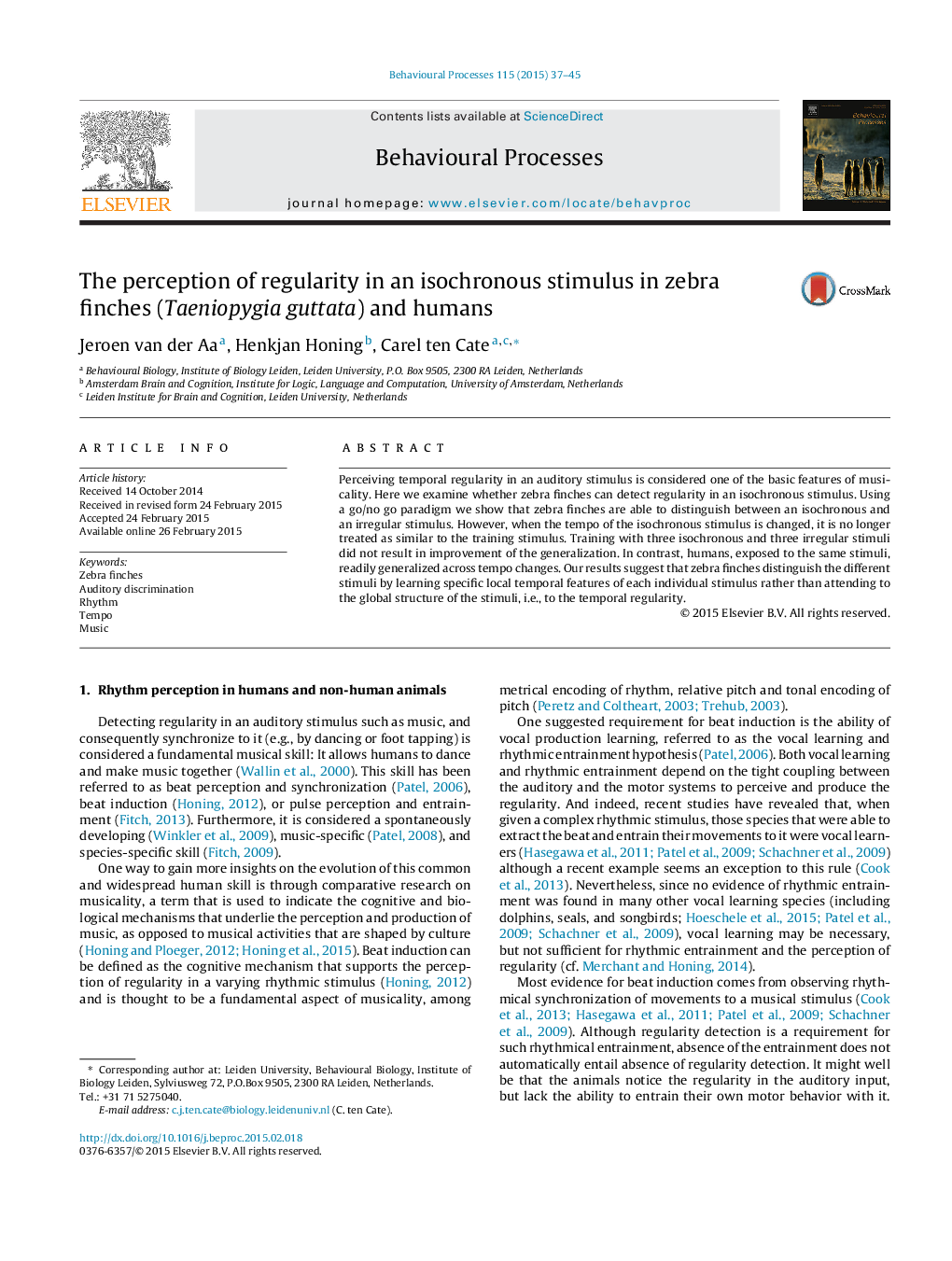| Article ID | Journal | Published Year | Pages | File Type |
|---|---|---|---|---|
| 2426588 | Behavioural Processes | 2015 | 9 Pages |
•Perceiving temporal regularity in an auditory stimulus is basic to musicality.•We examined whether zebra finches can detect regularity in an isochronous stimulus.•Zebra finches can distinguish an isochronous from an irregular stimulus.•However, in contrast to humans, zebra finches do not generalize over tempo changes.•Zebra finches seem to learn local temporal features of each individual stimulus.
Perceiving temporal regularity in an auditory stimulus is considered one of the basic features of musicality. Here we examine whether zebra finches can detect regularity in an isochronous stimulus. Using a go/no go paradigm we show that zebra finches are able to distinguish between an isochronous and an irregular stimulus. However, when the tempo of the isochronous stimulus is changed, it is no longer treated as similar to the training stimulus. Training with three isochronous and three irregular stimuli did not result in improvement of the generalization. In contrast, humans, exposed to the same stimuli, readily generalized across tempo changes. Our results suggest that zebra finches distinguish the different stimuli by learning specific local temporal features of each individual stimulus rather than attending to the global structure of the stimuli, i.e., to the temporal regularity.
